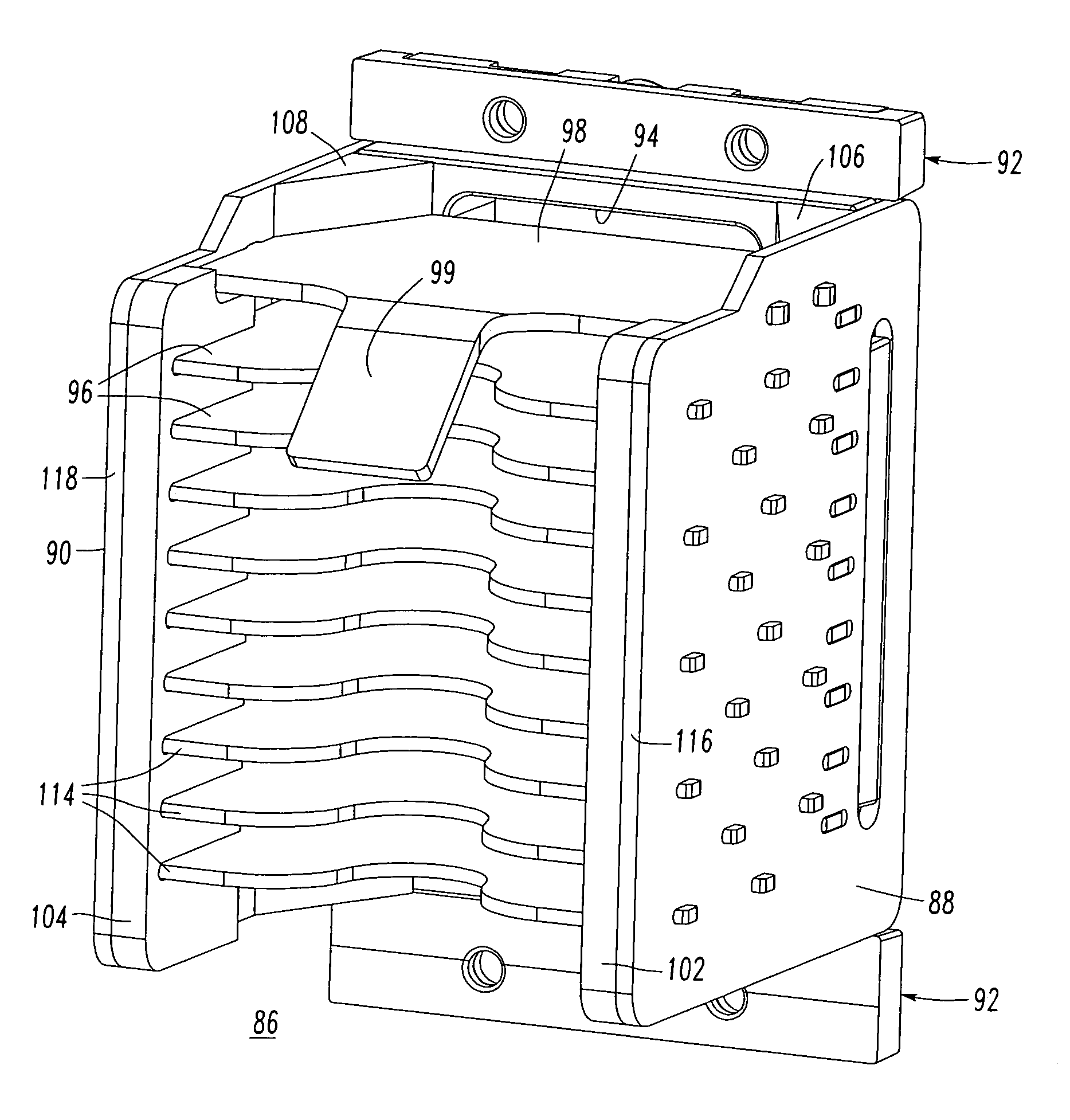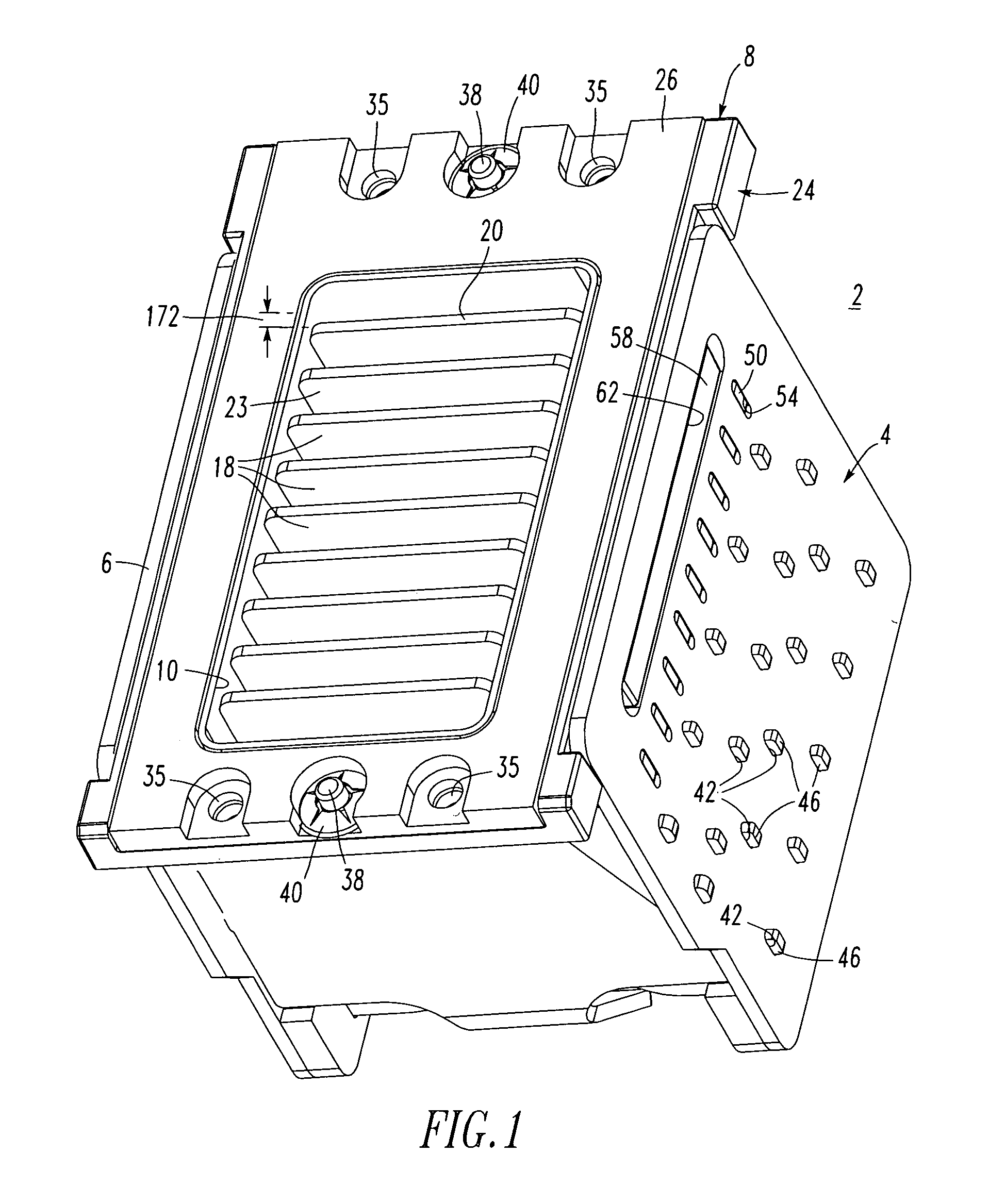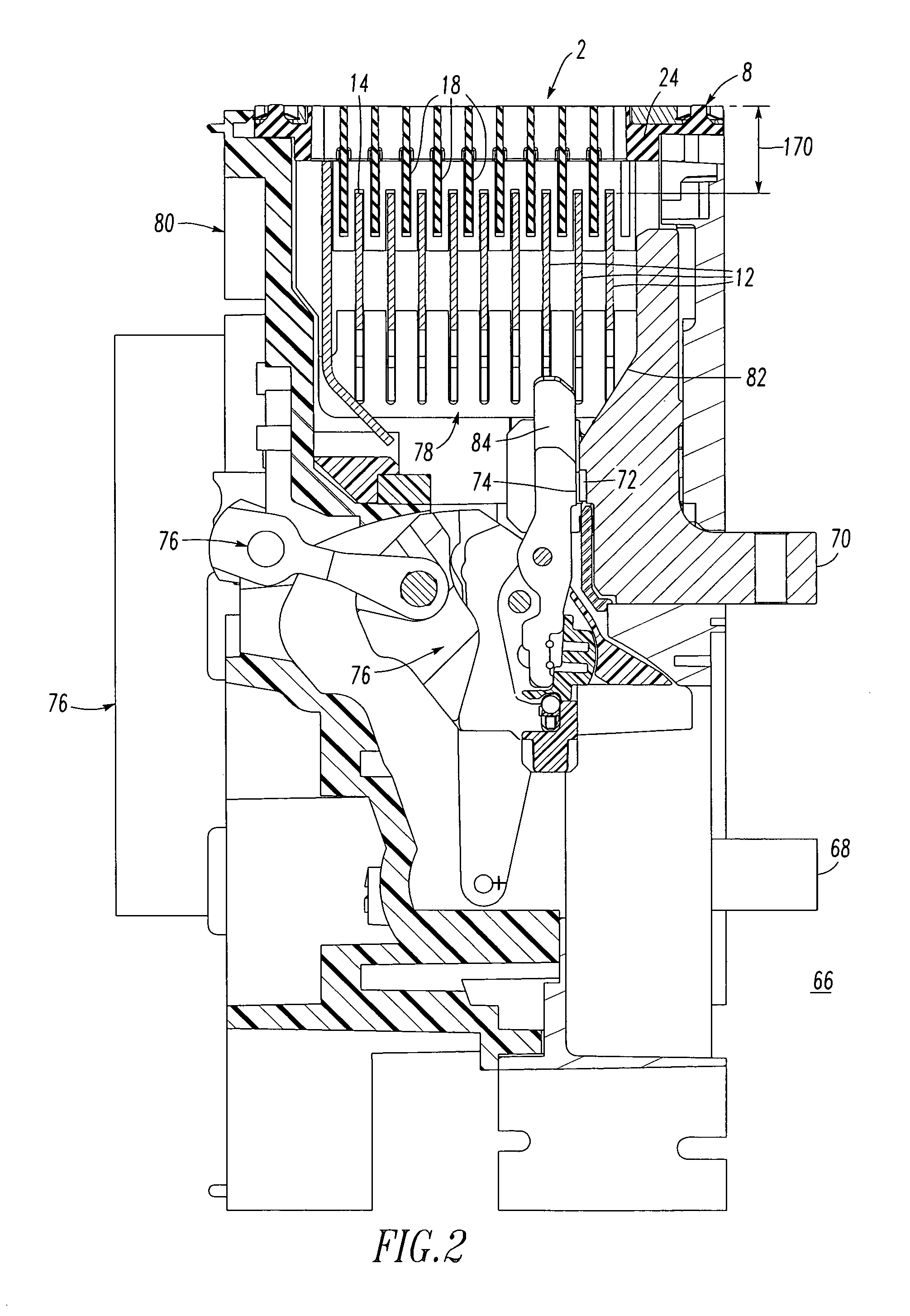Arc chute and circuit interrupter employing the same
a circuit breaker and chute technology, applied in the field of circuit breakers, can solve the problems of damage to the housing of the arc chamber, damage to the moveable and stationary contacts, and undesirable arcs
- Summary
- Abstract
- Description
- Claims
- Application Information
AI Technical Summary
Benefits of technology
Problems solved by technology
Method used
Image
Examples
example 1
[0053]Although not shown in FIG. 1, the surfaces 63 of the baffles 18 may interlock with the notches 65 on the bottom side of the molded top 24, in order to provide added mechanical support and to prevent arc bypass.
[0054]FIG. 2 shows a circuit breaker 66 incorporating the arc chute 2 of FIGS. 1 and 15. The circuit breaker 66 includes a first power terminal 68, a second power terminal 70, a stationary contact 72 electrically connected to the second power terminal 70, a movable contact 74 electrically connected by a suitable flexible (e.g., braided) conductor (not shown) to the first power terminal 68, an operating mechanism 76 adapted to open and closed the contacts 72,74; and the arc chute 2. Each one of the baffles 18 is disposed between and is separated from an adjacent pair of the arc plates 12. As best shown in FIG. 2, the baffles 18 extend above the top edge 14 of the arc plates 12 and overlap such arc plates, in order to prevent an arc from the stationary contact 72 and the m...
example 2
[0058]Although relatively thicker metal arc plates 12 may be employed to reduce bending, in the event that two or more arc plates 12 bend toward each other, the insulating dividing baffle 18 between them prevents contact, and thereby maintains the effective cooling surface area and number of voltage divisions in the arc chute 2.
[0059]FIG. 3 shows another arc chute 86 that is somewhat similar to the arc chute 2 of FIG. 1. The arc chute 86 includes a first support or side portion 88, a second support or side portion 90, an exit or top portion 92, a vent opening 94, a plurality of generally parallel electrically conductive arc plates 96 including a top arc plate 98 having an arc horn 99, and a plurality of insulating dividing members, such as baffles 100. The arc chute 86 further includes a pair of gassing combs 102,104 (as best shown in FIG. 13) and a pair of arc chute gas diverting wedges 106,108 (as best shown in FIGS. 6 and 14) (e.g., without limitation, made of a suitable insulati...
example 3
[0065]The difference in the widths 150,152 may be, for example, 0.1 inch. This difference provides a gap that doubles the leading edge plate spacing, thereby making it easier for an arc, if formed on the outer contact arms, to enter the arc plates 12. A larger arc plate spacing provides less resistance to arc motion than tightly spaced arc plates. Otherwise, the arc might “stall” at the leading edge and track on the surface.
[0066]FIGS. 9–12 show other molded arc chute tops 154,156,158,160, which are somewhat similar to the molded top 24 of FIG. 8. Here, instead of the single vent opening 28 of FIG. 8, there are a plurality of vent openings 162,164,166,168 in the respective molded tops 154,156,158,160. In these examples, the top edge 14 of the arc plates 12 (FIG. 2) is offset below the vent openings 162,164,166,168 by a first distance 170 (FIG. 2), while the top edge 20 of the insulating dividing members 18 (FIG. 1) is offset below the vent openings 162,164,166,168 by a second distan...
PUM
 Login to View More
Login to View More Abstract
Description
Claims
Application Information
 Login to View More
Login to View More - R&D
- Intellectual Property
- Life Sciences
- Materials
- Tech Scout
- Unparalleled Data Quality
- Higher Quality Content
- 60% Fewer Hallucinations
Browse by: Latest US Patents, China's latest patents, Technical Efficacy Thesaurus, Application Domain, Technology Topic, Popular Technical Reports.
© 2025 PatSnap. All rights reserved.Legal|Privacy policy|Modern Slavery Act Transparency Statement|Sitemap|About US| Contact US: help@patsnap.com



